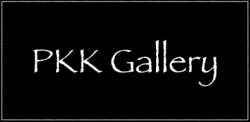|
Oil Pastels consist of pigment mixed with a non-drying oil and wax binder. They must not be confused with hard or soft "French" pastel sticks, which are made with a gum or methyl cellulose binder, and have a more chalk like feel.
The history of oil pastels goes back to Japan where the oil pastels were first designed for school students to express themselves creatively. The quest for a good coloring medium led to the development of the company "Sakura Cray-Pas" in 1924. The company even today makes the economical Expressionist and the artists grade Specialist line of oil pastels. The early oil pastels had pigments in a mixture of mashed paraffin, stearic acid and coconut oil as a binder. Nothing drastically changed until 1948 when a French manufacturer who specialized in high quality art products, Henri Sennelier was approached by Pablo Picasso. Picasso wanted a medium that had the richness of oil paints but could be applied to any surface without the hassle of having to wait for the paint to dry. to develop a fine arts version. In 1949 Sennelier produced the first oil pastels intended for professionals and experienced artists. These were superior in wax viscosity, texture and pigment quality and capable of producing more consistent and attractive work. Thus the professional oil pastel was born. Today there exist a whole range of oil pastel brands and professional grade oil pastels can cost as much as $800.00.
1 Comment
|
AuthorI am a self taught artist working with oil pastels, charcoal and acrylics. In my blog I share what inspires me and my work. Archives
November 2016
|

 RSS Feed
RSS Feed
